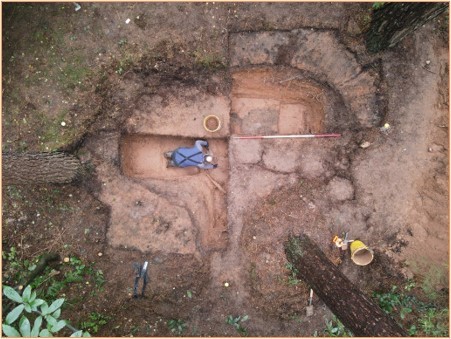There are a large amount of exciting historical events happening in the month of April. Why not check them out below?
Until 14th April: A vintage fun fair is currently being held at Wollaton Hall until 14th April. Listen to music from the 50’s and 60’s while riding traditional rides. Check out the event information here.
9th-20 April: Join our amazing Buildings Officer Janine Buckley at Rufford Abbey for the Horse Detective Tours. This up-close look Rufford’s stables in the 17th century will teach you how horses saved the estate from ruin and became famous acting on the Broadway stage as well as engaging in detective work to uncover the lives of famous 19th century racehorses. Tours will be taking place on 9th, 11th, 18th, 19th and 20th; 11am and 2pm each day. Book your free place here.
Saturday 13th April: Drop by the Lakeside Arts for a free workshop where you can make your own stained-glass window, inspired by medieval designs. Check out the event information here.
Monday 15th April: The National Holocaust Centre and Museum will be presenting a talk remembering the 79th Anniversary of the Liberation of Bergen-Belsen by British Troops. Here you will get the chance to learn about a number of artefacts and survivor experiences. Talks will be hosted at 11am and 1pm. Book your place here.
Wednesday 17th April: Head down to Worksop Library at 2pm on Wednesday 17th April to learn about the Dukeries in Bassetlaw. Hear how they came into being, how they were affected by the dissolution and the civil war, plus many other interesting facts. Tickets cost £3. Book your place here.

Above: Thoresby Hall. By Philip Wallbank, CC BY-SA 2.0
Tuesday 23rd April: Ever wondered how people were punished in the olden days? Mansfield Central Library is hosting a talk about how society chose to punish their wrong doers, including witches and perjurers. The talk will also tell stories of punishing the dead, a horse and cart, and even a train! Tickets are £3 and will take place at 2pm. Book your place here.
Saturday 27th April: For St George’s day, head to Sherwood Forest for a special Knight School. Enjoy a knightly obstacle course, combat training, blunt archery, among many other activities. Plus, Outlaws will be demonstrating combat techniques and tactics. Book your free place here.
Saturday 27th April: Thoresby Park will be hosting a Militaria valuation day with a Bamford Militaria valuer. The event will be open between 10:30am-3:30pm. No need for booking, just head down! Check out the event information here.
Tuesday 30th April: Local historian Robert Mee will be hosting a talk focusing on the trends of early advertising in 18th and 19th century newspapers at the West Bridgford Library. The talk will be begin at 2pm and tickets cost £3. Book your place here.
Tuesday 30th April: On the 200th anniversary of Lord Byron’s death, join the staff of the Nottingham Archives for a talk exploring the history of Newstead beyond the Byron family. The event starts at 2:15pm and tickets cost £5. Book your place here.





